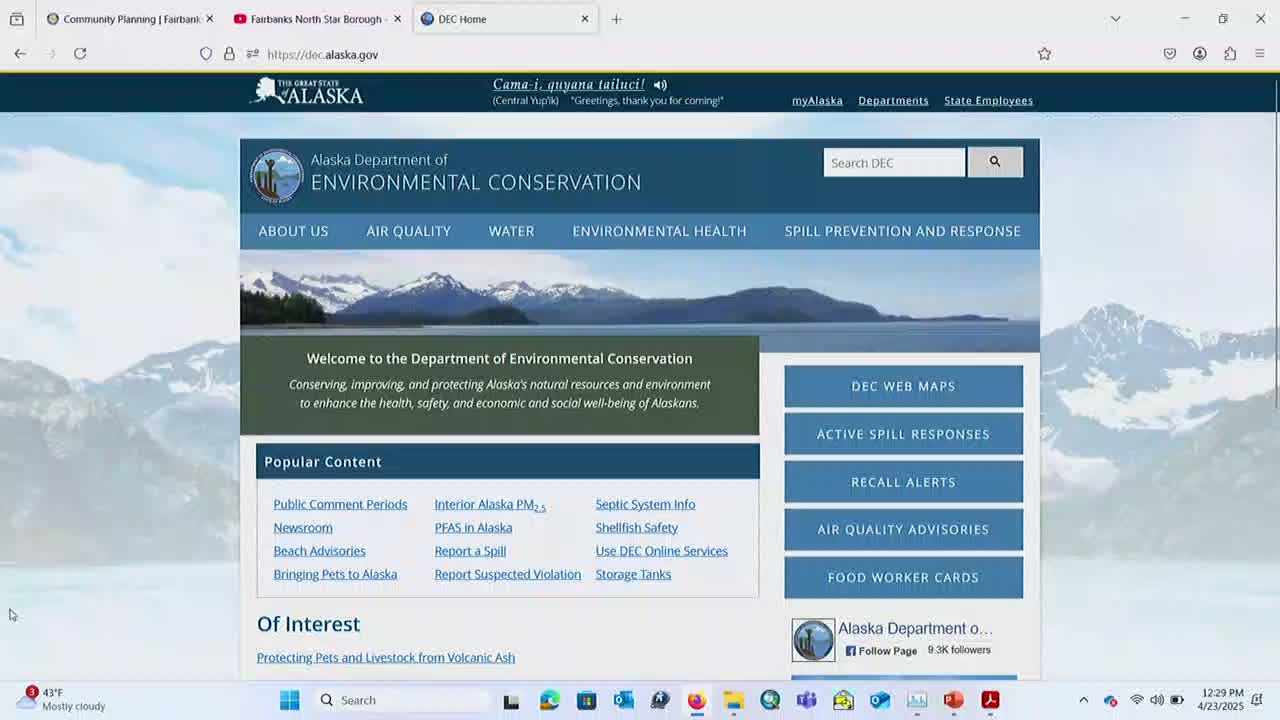DEC introduces resources for managing contaminated sites in Alaska
April 24, 2025 | Fairbanks North Star (Borough), Alaska
Thanks to Scribe from Workplace AI , all articles about Alaska are free for you to enjoy throughout 2025!

This article was created by AI using a video recording of the meeting. It summarizes the key points discussed, but for full details and context, please refer to the video of the full meeting. Link to Full Meeting
The meeting featured a presentation by a DEC official who introduced the department's structure, focusing on the Spill Prevention and Response (SPAR) division. This division plays a pivotal role in managing environmental hazards, particularly in responding to contaminant releases and overseeing long-term cleanup efforts. The official highlighted the various resources available to the public, including a comprehensive web map that details the locations of contaminated sites throughout Alaska, including Fairbanks.
As the presentation progressed, attendees learned about the different classifications of contaminated sites. Active sites, marked by diamonds on the map, indicate ongoing cleanup efforts, while yellow squares represent sites where cleanup has been completed. Red stars signify sites that have been closed but still contain some contamination, albeit with measures in place to prevent exposure. This nuanced understanding of site statuses is vital for residents concerned about environmental health.
The discussion also delved into specific contaminants, such as PFAS (per- and polyfluoroalkyl substances), which have garnered increasing attention due to their prevalence and potential health risks. The DEC representative explained how these substances often enter the environment, particularly through industrial activities and firefighting foams used at airports. The assembly members expressed interest in understanding the implications of these contaminants on local water bodies, including the Chena River and nearby sloughs.
Questions from assembly members further enriched the dialogue. One member sought clarification on the differences between sites marked as "cleanup complete" and those with "institutional controls." The DEC official explained that while the former indicates that contamination levels have dropped below safety thresholds, the latter means that some contamination remains, but safeguards are in place to mitigate exposure risks.
As the meeting drew to a close, the emphasis on community involvement became clear. The DEC encouraged residents to utilize their online resources to stay informed about local environmental issues and to participate in discussions about contamination management. This call to action resonated with attendees, highlighting the shared responsibility of protecting Fairbanks' natural resources.
In a world increasingly aware of environmental challenges, the Fairbanks North Star Borough assembly meeting served as a vital platform for transparency and collaboration between government officials and the community. As the DEC continues its work, the hope is that informed citizens will play an active role in fostering a safer, cleaner environment for all.
Converted from Fairbanks North Star Borough Regular Assembly Meeting - April 24, 2025 meeting on April 24, 2025
Link to Full Meeting
Comments
View full meeting
This article is based on a recent meeting—watch the full video and explore the complete transcript for deeper insights into the discussion.
View full meeting